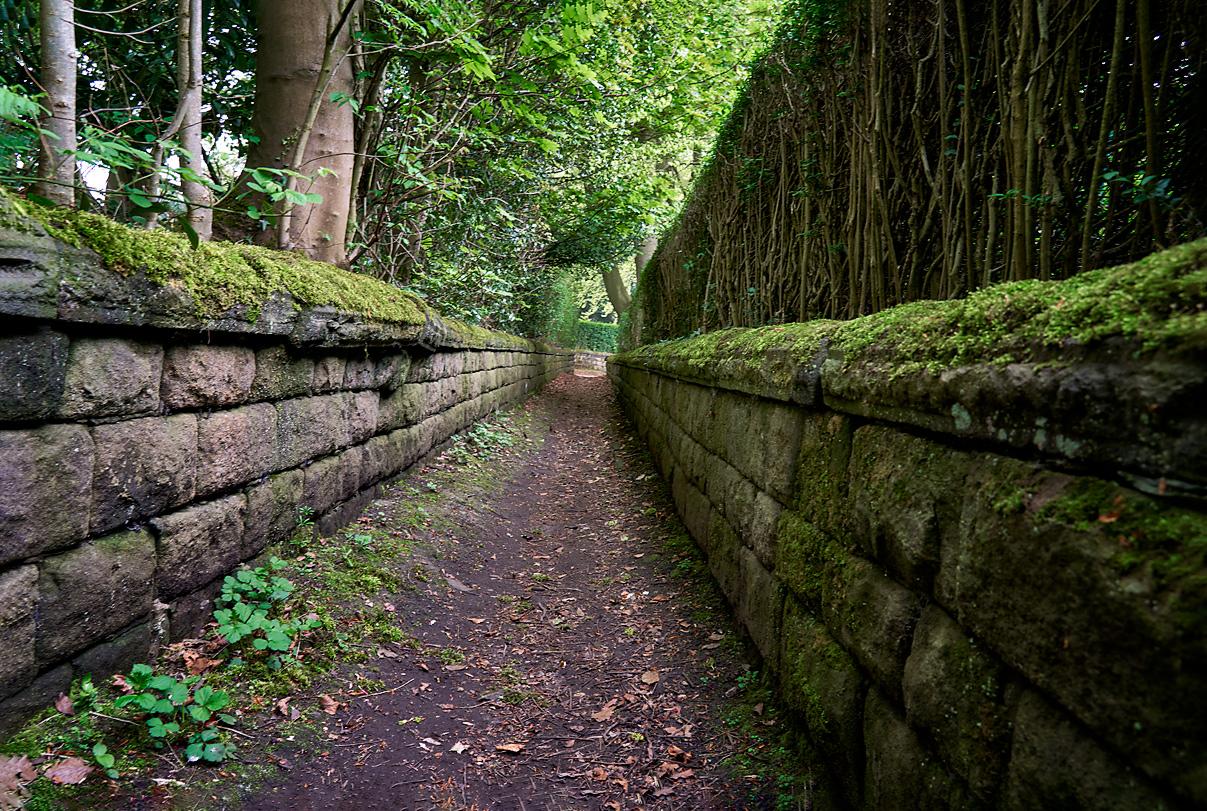What’s the story behind the Spite and Malice Ginnel?
In order to provide some context to the story behind Spite, Malice and the Ginell, I need to start at the beginning. Today Cragg Wood is a conservation area in Rawdon, Leeds, West Yorkshire with some very expensive houses, but it was once part of the great belt of primaeval woodland which stretched from Hawksworth and Newlay Woods on the north side of the river Aire, to Bramley and Windhill on the south of the river Aire. It is said that some of Cragg Wood was planted in 1631 (by Francis Layton?) One thing is for sure, there was very little development before the Midland Railway arrived at Apperley Bridge in 1846 which made it possible for Bradford textile barons (or at least baronets) to live in a deeply rural ambience yet commute daily to their mills and warehouses. Geographically the wood looks towards Bradford, with its wealthy residents very much Bradford orientated.
Nathanial Brigg developed Cliffe Drive, Cragg Wood Drive, Woodlands Drive and Underwood Drive as four fashionable west/east carriage drives with lodge houses at their entrances. He had the woods landscaped and planted with trees and shrubs, many mature specimens of which remain today. The Cragg Wood area is located on the southern facing slope of a wooded valley. The valley follows the course of the River Aire, with land rising relatively steeply from the washlands on either side. The Leeds & Liverpool canal and railway have taken advantage of the valley bottom and add to the picturesque settings and views from and towards Cragg Wood.
The villa developments took advantage of the sloping topography. Houses were built on the varying terraces of the valley side, allowing each to benefit from open views across the valley. In the 1881 census, of the 24 “big houses”, 20 were occupied by textile magnates. Today some of those houses can still be found in Cragg Wood such as Summer Hill, Daisy Hill, Cliffe cottage and Cragg Royd, plus cottages at Cragg Terrace (known previously as Cragg Bottom or Cragg Row).
Cragg Wood and it’s houses would have attracted many well-known Yorkshire family names, but it is the Ripley Family and the Briggs family who are associated to the story of Spite and Malice and the Ginnel
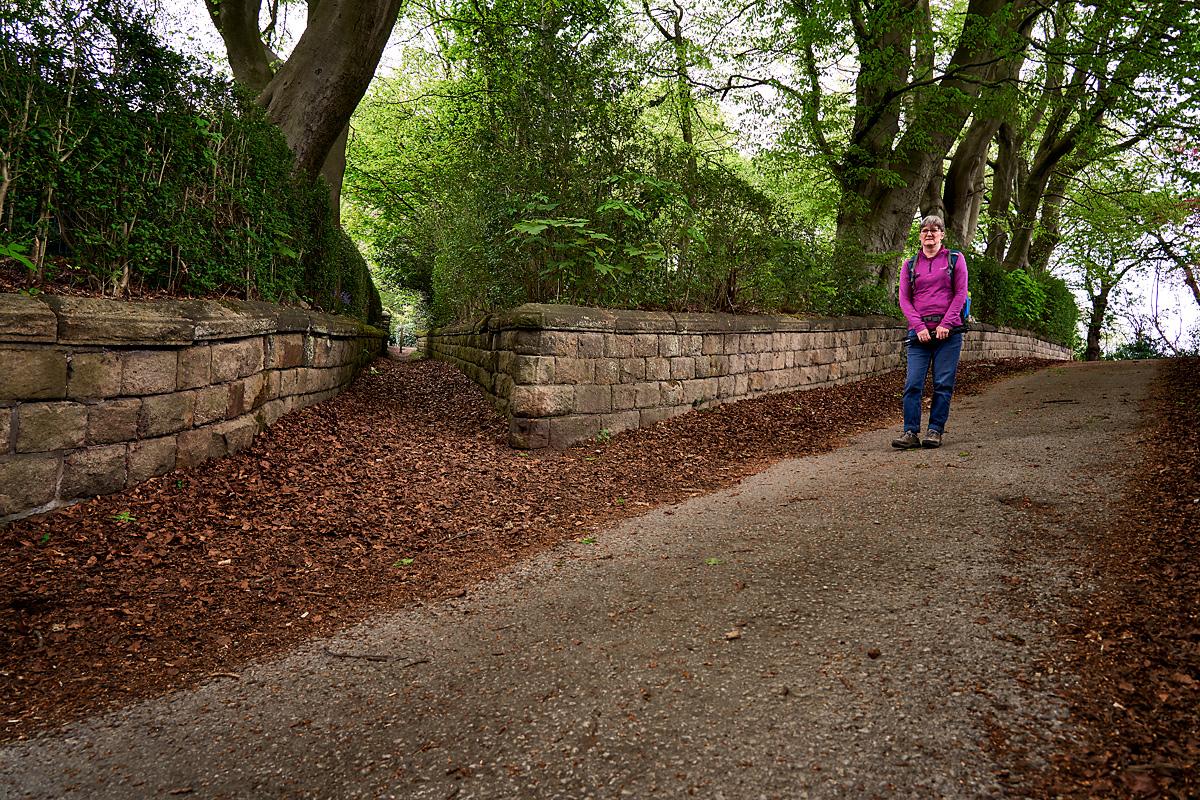
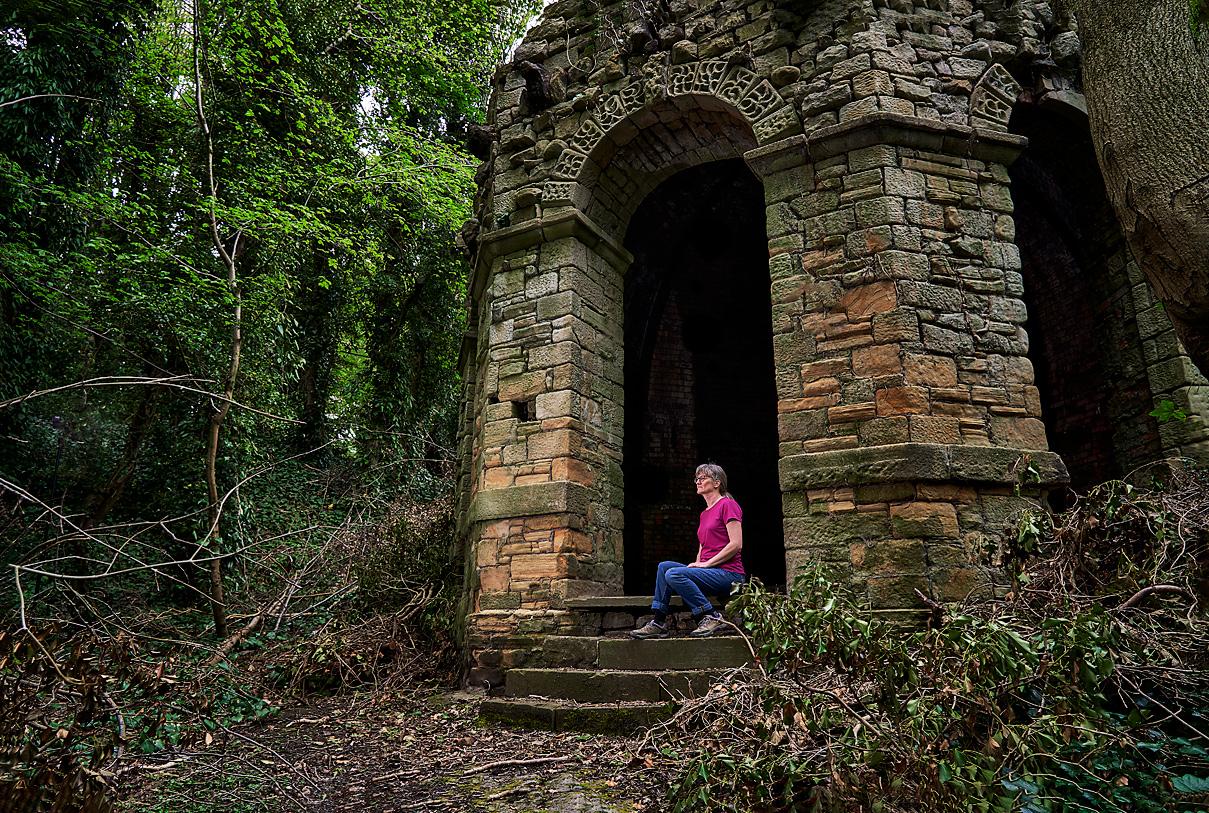
Spite & Malice is the expression used to refer to both the ginnel and the dispute from which it took its name. It is difficult to discover the true story. However, a pre-1914 post card is reproduced in ‘Round and About Aireborough’ Vol II. Martin Rigg, and is entitled ‘Spite and Malice’.
Basically, the story is that after Milligan’s death, when the Ripleys were living at Acacia to the west of the ginnel and the Briggs at Cliffe Cottage to the east, ever higher walls were alternately built on both sides to prevent one household viewing the other. Ultimately large towers were built on each side. Briggs’ tower has been demolished, though traces remain, but on the Ripley side a strange beehive-shaped summerhouse, somewhat like a Celtic broch, still remains.
The mystery is why wealthy civilised people, connected by marriage and business, should behave in this childish way, though if Briggs’ eyesight was failing it may have affected him in other ways. Another reason may have been political in that the Ripleys had turned Tory and from Congregationalism to Anglicanism, whereas Briggs remained a Liberal and strongly Baptist. In this connection it is noteworthy that Ripley was unseated after the 1868 Parliamentary election in Bradford on a petition alleging that he had been responsible for corrupt practices. It was claimed that some of his supporters had supplied opposing voters with so much liquor that they were incapable of voting! As a Baptist Briggs would, of course, have strong views on liquor. Again, it could have been that one party owned land between parcels belonging to the other and was able to frustrate development.


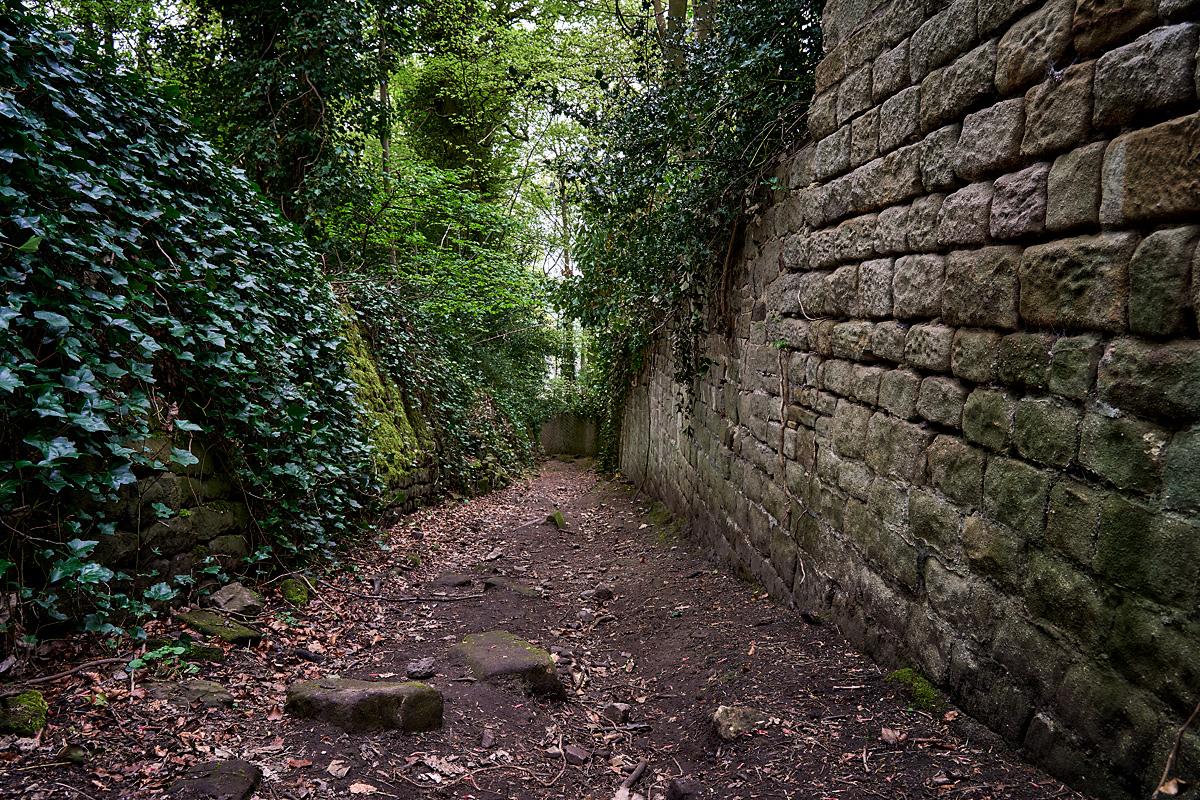
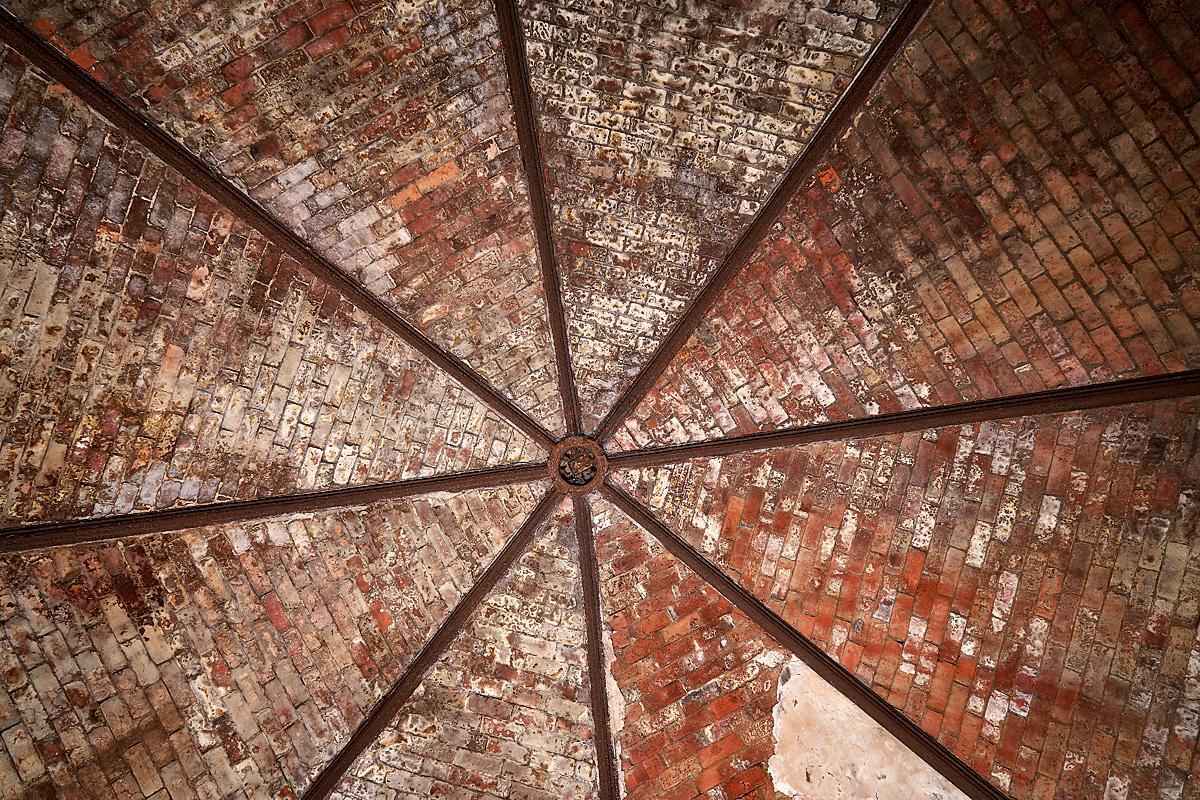
Your content goes here. Edit or remove this text inline or in the module Content settings. You can also style every aspect of this content in the module Design settings and even apply custom CSS to this text in the module Advanced settings.

